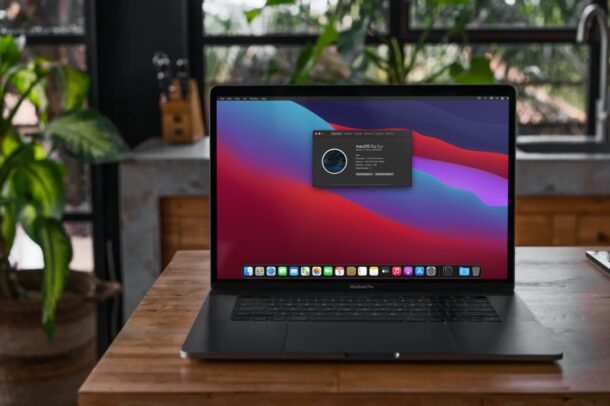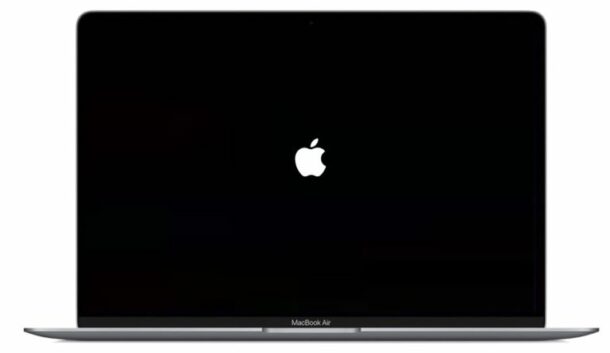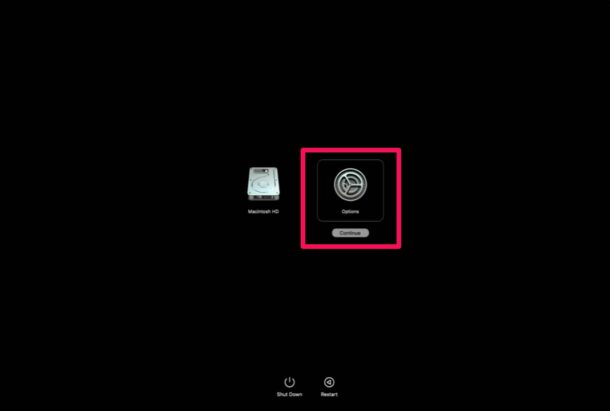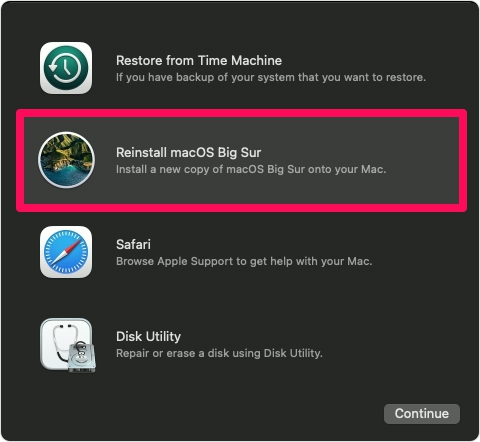How to Reinstall macOS on M1 Apple Silicon Macs

If you’re a proud owner an Apple Silicon Mac with the M1 chip, you may want to learn how you can perform certain troubleshooting tasks like reinstalling macOS, force restarting, and booting into safe mode, since the procedures are slightly different from the outgoing Intel Macs due to the changes in system architecture.
Reinstalling macOS may sometimes be a necessary troubleshooting step if you’re facing any issues with system software on your Mac. It can sometimes help to resolve curious system crashes and app issues, poor overall performance, and other unexpected behavior that otherwise can’t be easily tracked down or fixed. Fortunately, with the Apple Silicon Macs you can reinstall macOS on your system while keeping all your files and settings intact. This is typically done by booting the Mac into recovery mode, or from a USB drive.
Existing Intel Mac users may already be aware of booting into Recovery on an Intel Mac, but Apple has changed the steps needed to enter recovery mode on the new M1 Apple Silicon Macs, and thus reinstalling macOS is a bit different too. Plus, there are undoubtedly new users who’ve switched to the platform from Windows who are less familiar. Whatever the case, don’t worry, as we’ll be taking a look at reinstalling macOS on Apple Silicon Macs from recovery mode.
How to Reinstall macOS on M1 Apple Silicon Macs
If you’re an existing macOS user, you’re probably reading this because you already tried booting your Mac into recovery mode by pressing Command+R keys on bootup like you would on an Intel Mac, but to no avail with Apple Silicon. So, without further ado, let’s get started with the new method.
- First of all, you’ll need to shut down the machine. Click on the Apple menu from the top-left corner of your screen and choose “Shut Down” from the dropdown menu as shown in the screenshot below.

- Wait for a few seconds. Then, press and hold the Touch ID / power button on your Mac (this button is in the upper right corner of Mac laptop keyboards) to boot it up. Continue holding the power button even if the Apple logo shows up and let go of your finger when you see “Loading startup options” right below the logo.

- The startup drive and options will now show up on the screen. Hover the mouse cursor over “Options” and click on “Continue”.

- Authenticate with an admin user if necessary
- This will take you to the macOS Utilities screen which is basically the recovery mode. Now, select the option “Reinstall macOS Big Sur” located above the Safari option and click “Continue”.

At this point, you simply need to follow the onscreen instructions to initiate the reinstallation process.
Reinstalling MacOS will take a while, depending on how fast the computer is and the speed of the internet connection, so be patient.
Keep in mind that the above steps are for reinstalling macOS without losing your settings or any data stored on your M1 Mac. However, if you want to clean install macOS and use the system like it’s brand new, you’ll need to erase the storage drive where the operating system is installed before you select the “Install macOS” option from macOS Utilities. This is called a factory reset and you can learn more about the procedure to erase and factory reset M1 Apple Silicon Macs here.
It may be helpful to know this new method to boot into recovery mode is not some software change related to macOS Big Sur and later OS releases, but rather a hardware-related one due to the architectural change with Apple Silicon. Hence, these steps are only applicable to the Macs that are powered by Apple silicon. For Intel-based Macs, the steps are different, but once you enter the macOS Utilities screen, the reinstallation process remains pretty much the same.
If you’re looking to downgrade Big Sur software to an older version of macOS, you can restore your Mac from a previous Time Machine backup in the same menu, provided the backup was made prior to the date you updated your system to the latest version anyway. Keep in mind that all Apple Silicon Macs shipped with Big Sur, so the systems do not support earlier versions of system software than macOS 11. Nonetheless you can revert to prior Big Sur builds, like 11.1 from 11.2, for example.
Did you reinstall macOS on your Apple silicon Mac? What’s your reason for reinstalling the operating system, was it troubleshooting or another purpose? Did you wipe the drive before restoration for a clean install, or did you simply reinstall it while keeping your files and settings intact? Share your thoughts, personal experiences, and voice out your opinions in the comments section down below.






In Big Sur it is not possible to roll back to a previous OS version directly from a Time Machine backup, which only backs up the Data volume.
To roll back you have to erase, reinstall the previous version and migrate from the Time Machine backup.
The M1 Macs can not be downgraded prior to Big Sur, since earlier macOS versions do not have support for Apple Silicon architecture.